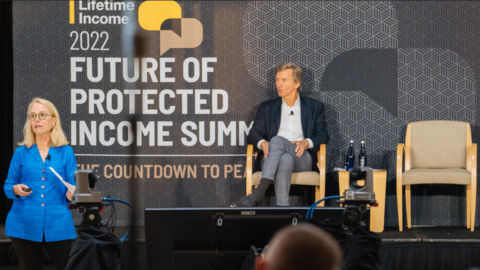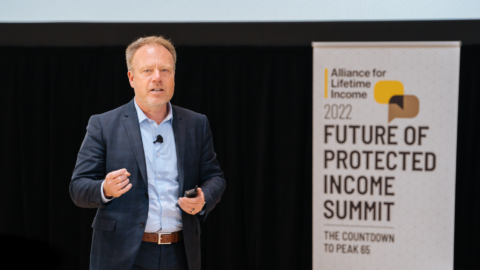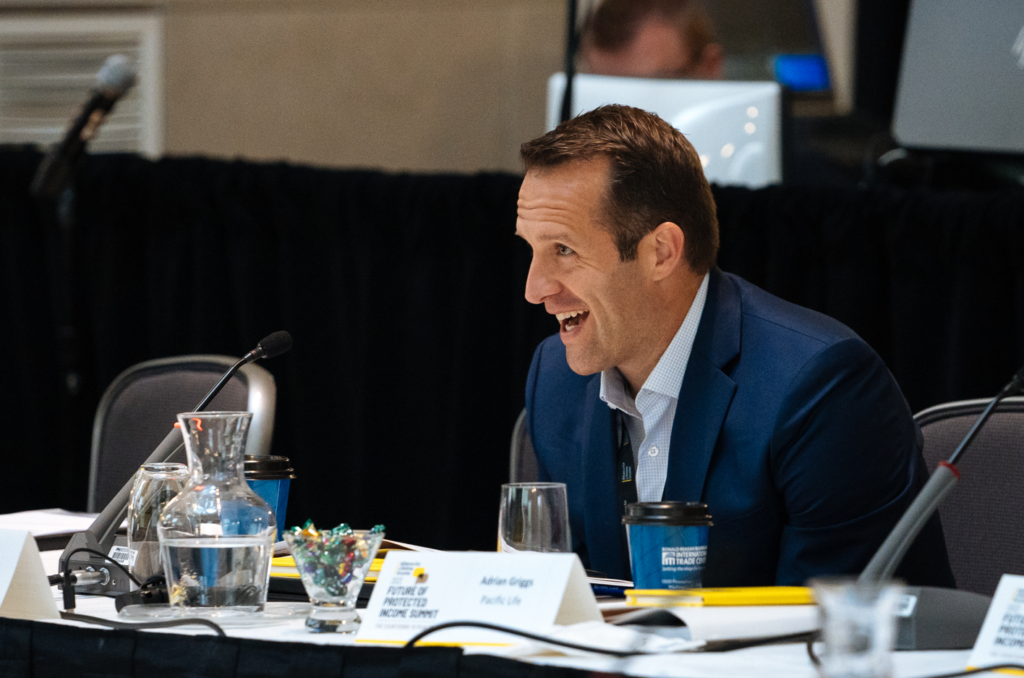ALI Summit 2022 – RII Fellows
Many of the speakers at the 2022 Summit serve as education and research fellows and scholars for the Institute and all bring a passion to help consumers. Their diverse set of backgrounds and perspectives helps them look at these vexing problems by identifying both concepts as well as tools to help provide safety to millions of Americans who want to achieve a secure and happy retirement. Below you’ll find key insights from RII fellows and scholars.
Some of the key insights from the Summit included:

Research scholar and Executive Director for Center for the Future of Aging at the Milken Institute, Nora Super, and research fellow and CEO of Whealthcare Planning LLC, Chris Heye, discussed the high costs and cognitive risks associated with aging Americans. 70 percent of people turning 65 today will need long-term care (LTC) before they die, and many of them will need LTC for several years. Health professionals have known these risks for years, but few Americans are financially prepared for the high cost of LTC, which represents the most significant threat to their retirement security. Additionally, Chris Heye noted, “research shows our cognitive skills begin to decline starting at age 53, just at the time many people are beginning to make major financial decisions on how they will fund their retirement.” In addition, he also shared the risks that Dementia and Alzheimer’s pose to consumers- they may begin to take too much risk.

Jeff Cruz, legislative representative at the American Federation of Government Employees, Lori Lucas, CEO of the Employee Benefit Research Institute, and education fellow Suzanne Norman, spoke about the unique retirement challenges facing different races and women who often have savings and/or educational disadvantages. Their panel also prompted a lively audience debate on the role financial literacy plays in helping these groups have better outcomes in retirement. Annamaria Lusardi, Institute scholar and Academic Director of the Global Financial Literacy Excellence Center (GFLEC), shared, “those who have higher financial knowledge are much more likely to plan for retirement. The importance of financial literacy in predicting retirement planning remains strong even after controlling for demographic factors including age, race, education, and income.”

Research fellow and Frank M. Engle Distinguished Chair in Economic Security at The American College of Financial Services, Michael Finke, shared his findings from a recent survey he and Wade Pfau (Institute research fellow) conducted of defined contribution (401k) participants. They found that nearly twice as many participants prefer a mix of annuitized income (such as a pension) and investments to a system that offers only investments or only a pension. As they noted in their paper, “When given a choice to allocate savings among stocks, bonds, and an income annuity, overall respondents would place 33.5 percent of their total retirement savings in an income annuity, while older and average-income respondents prefer higher annuity allocations. Eighty-one percent of participants indicate that they are somewhat or highly likely to prefer a retirement plan that substitutes guaranteed income for bond investments.”
Additional highlights from the Summit included:
- Jeanne de Cervens and Bill Novelli of Georgetown University’s AgingWell Hub shared “JourneyMaps” that shows how consumers experience retirement as a series of stages with starts and stops, not as a straight line. Financial professionals can benefit from using their research (and visuals) to help better prepare their clients for these various retirement stages and the corresponding spending patterns. Financial professional, Kevin Jones, and his client, George Cody, brought this to life by sharing how they navigate this new framework in their relationship.
- Research fellow and head of retirement research for PGIM DC Solutions, David Blanchett, discussed how protected wealth strategies (PWS) help consumers have more choices to manage upside (growth) and downside (losses). These types of investments have been used by institutions for decades and now that the insurance industry has delivered them to consumers within tax deferred annuities, PWS now have the ability to provide lifetime income and, as David notes in his research paper, “using a utility-based resampled optimization framework, we find that PWSs have the potential to improve portfolio efficiency—potentially significantly.” Financial professionals now have another portfolio allocation tool to help their clients (i.e. the consumer) reach their retirement income goals within a stated risk framework.

- Leora Friedberg, co-chair of the scholars advisory group at the Institute, and Jason Fichtner, senior fellow of the Institute, shared their commitment to build a “pracdemic” bridge between the academic world and the consumer so that actionable research, insights and ideas are accessible to help solve retirement income challenges for Americans. “As we approach the greatest surge in the number of people age 65 and over, now is the time to adopt a new retirement security framework. The old metaphor of the three-legged stool of retirement planning no longer holds (employer pension, personal savings and Social Security). Many Americans lack sufficient, reliable, and protected retirement income that will last for the rest of their lives. It’s time for a new retirement security framework that focuses on the need for sufficient protected income in retirement.”
The bottom line – as Academics continue to find more ways to incorporate guaranteed investments into retirement portfolios that help Americans fund a secure retirement, financial professionals (advisory and fiduciary) will be called on to embrace these investments to provide consumers with the guaranteed income and the peace of mind that they want… and need.
Research Presented at the Summit
Click to find a full list of the research presented at the 2022 Summit.


